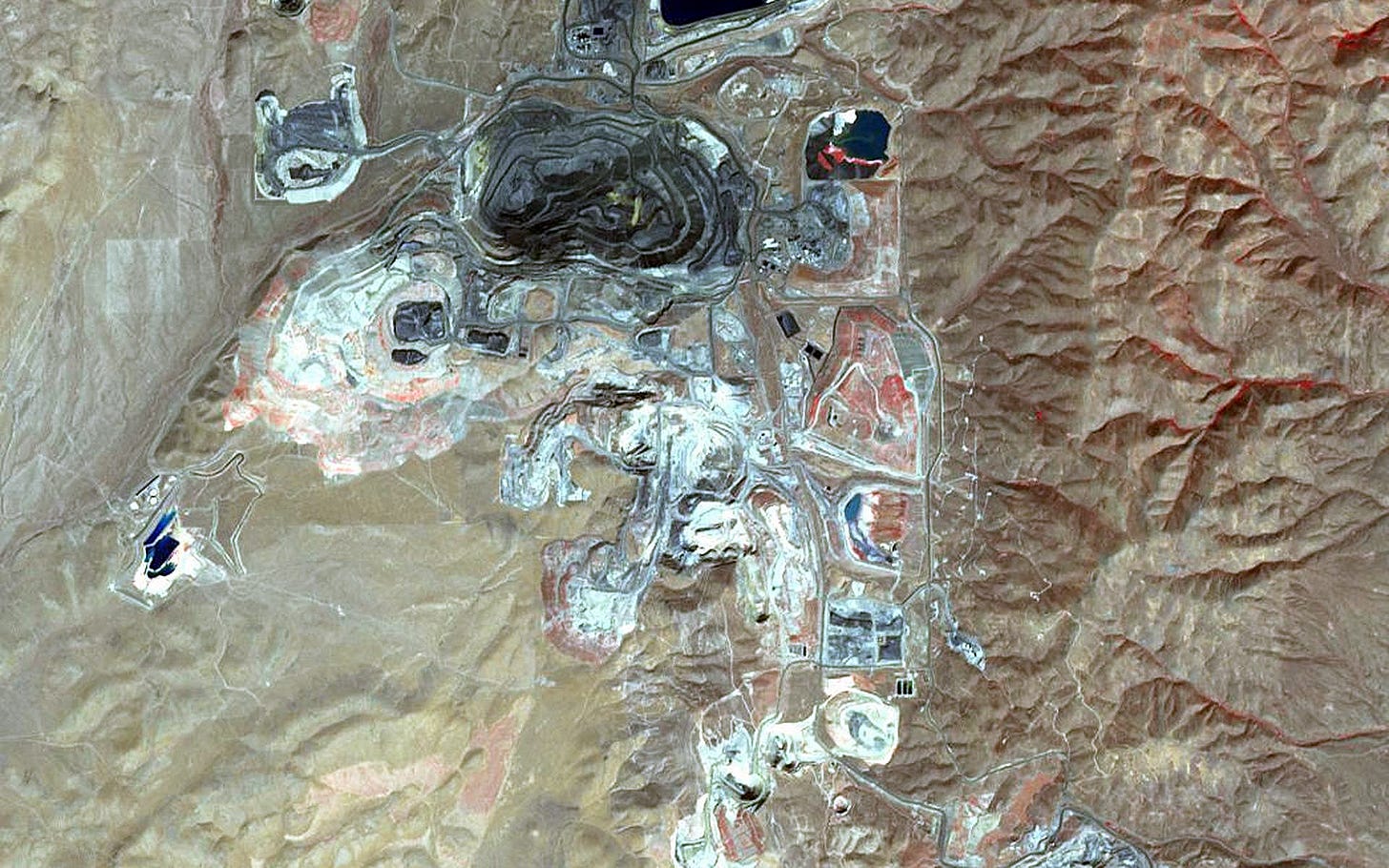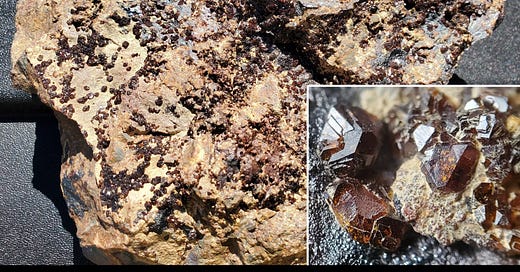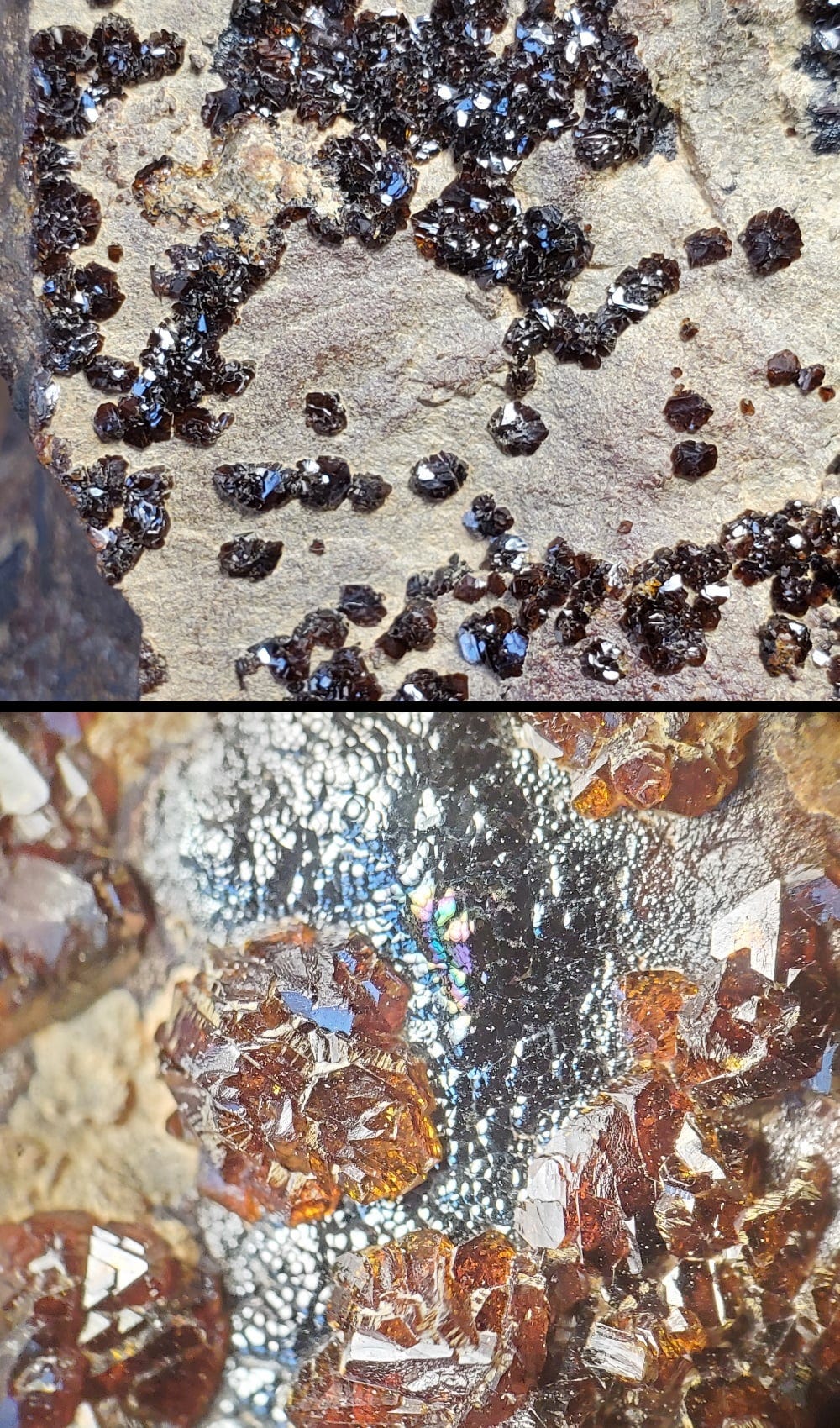Since jarosite is just hydrous potassium iron sulfate, KFe3+3(SO4)2(OH)6, you might think those common elements might make for a common mineral. It might actually BE pretty common, but it usually forms crusts or tiny crystals, so it may often go unnoticed by collectors who prefer larger crystals.

Several localities in Nevada are noted for jarosite, including the Silver Coin Mine between Winnemucca and Battle Mountain. My specimen is from the Goldstrike mines complex in the Tuscarora Mountains northwest of Carlin, near the northern border of Eureka County. Barrick’s Goldstrike mine is part of the Carlin gold trend and has produced more than 44 million ounces of gold since 1986 from both underground and open-pit operations. In 2018 it was the world’s 8th-largest gold mine by production.
The gold in the Carlin trend is mostly hydrothermal, deposited by mineral-bearing hot waters into host rocks that are often carbonates that are easily dissolved or partially dissolved by slightly acidic water. At the Goldstrike mines, the host is mostly Silurian to Devonian sedimentary rocks and the hot waters probably began to bring in gold and other minerals about 40 million years ago (Eocene time). The exact magmatic source of the heat is uncertain.
This 20-cm plate covered with 1- to 3-mm jarosite crystals also has some shiny black to iridescent botryoidal goethite (iron hydroxide). Some of the jarosite crystals have thin coatings of a powdery yellow material, which could be natrojarosite (sodium instead of potassium) or beaverite (lead-iron sulfate with copper or zinc), but it’s probably just more jarosite. At least 152 different mineral species are known from the Goldstrike mines.
As Chris Gammons has pointed out, jarosite is known on Mars, with implications for the presence of water there, and it is a common precipitate in acid-mine drainage and associated rocks.
Jarosite was named in 1852 by prolific German mineralogist Johann Friedrich August Breithaupt (1791-1873) for the type locality, Barranco del Jaroso (ravine of yellow flowers or willows) in southern Spain, but the mineral (or a closely related yellow, iron-bearing material) had been known since Roman times, when Pliny the Elder called it misy.
Color differences in the photos are because of pictures taken in sunlight and in artificial light. Cat. No. 1669.






